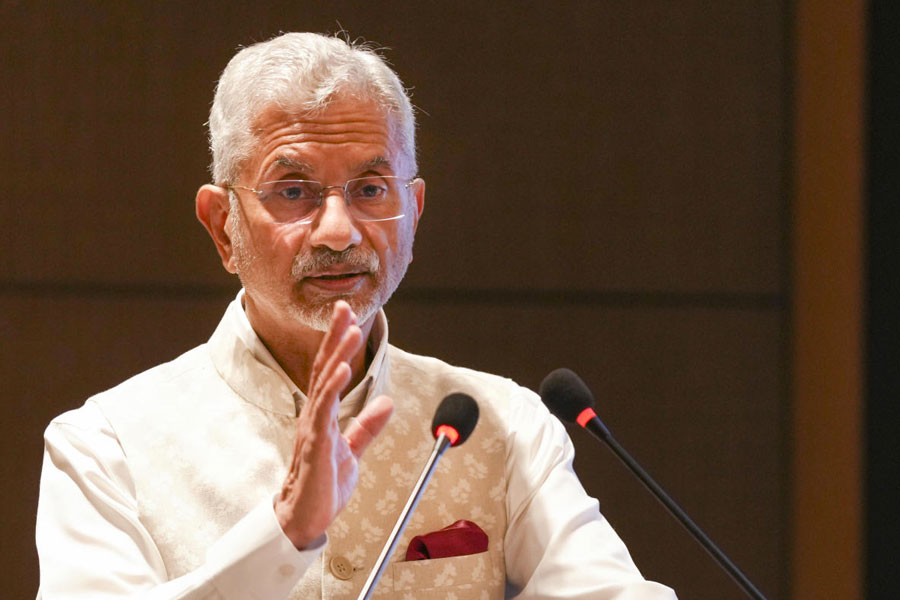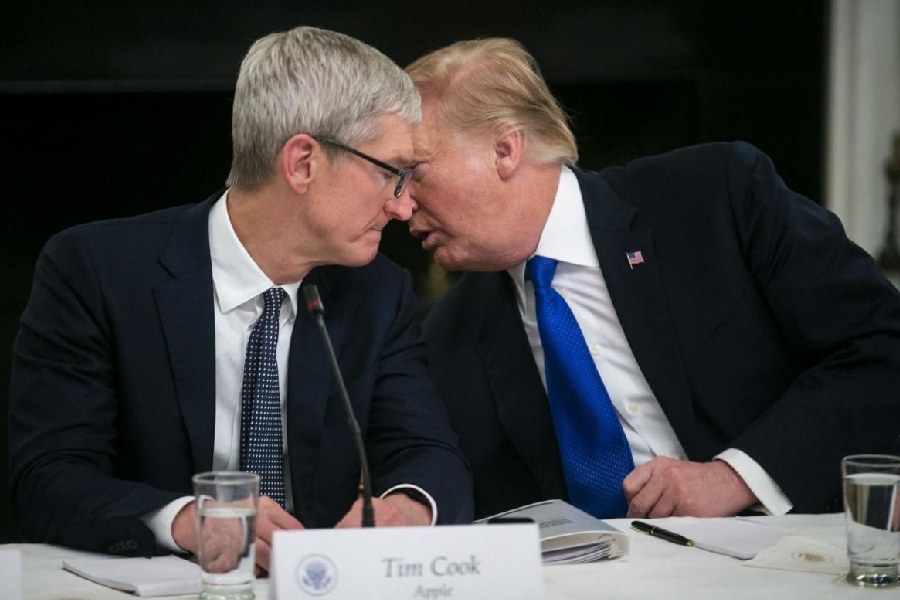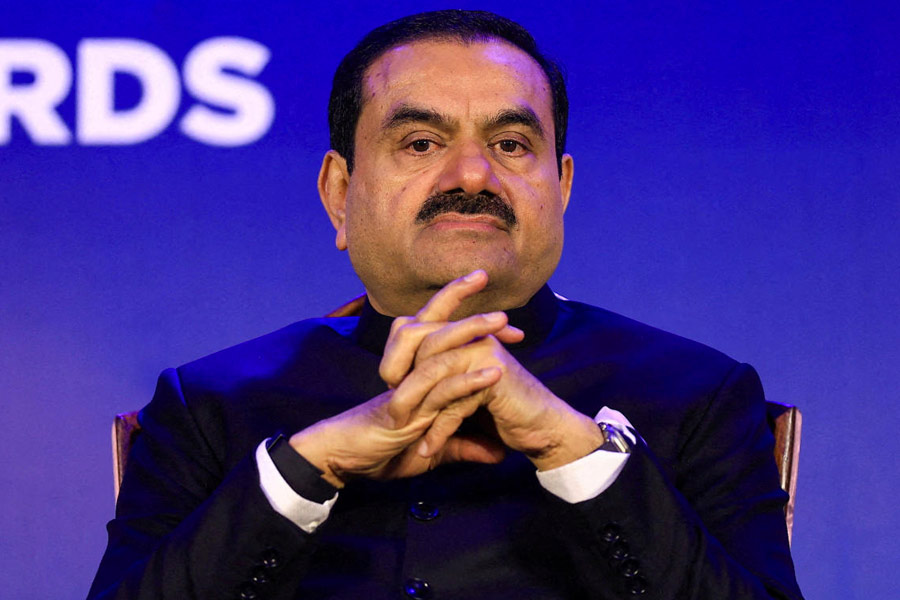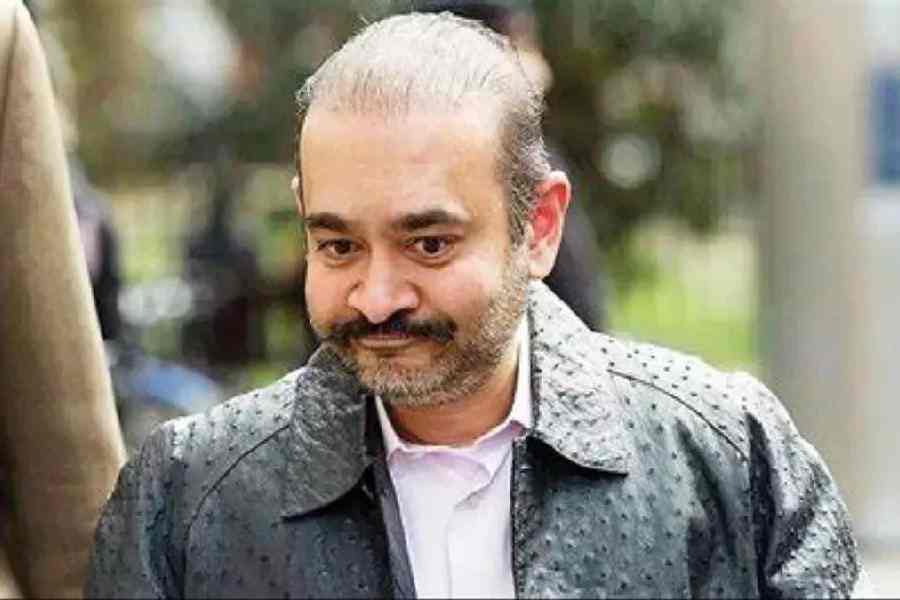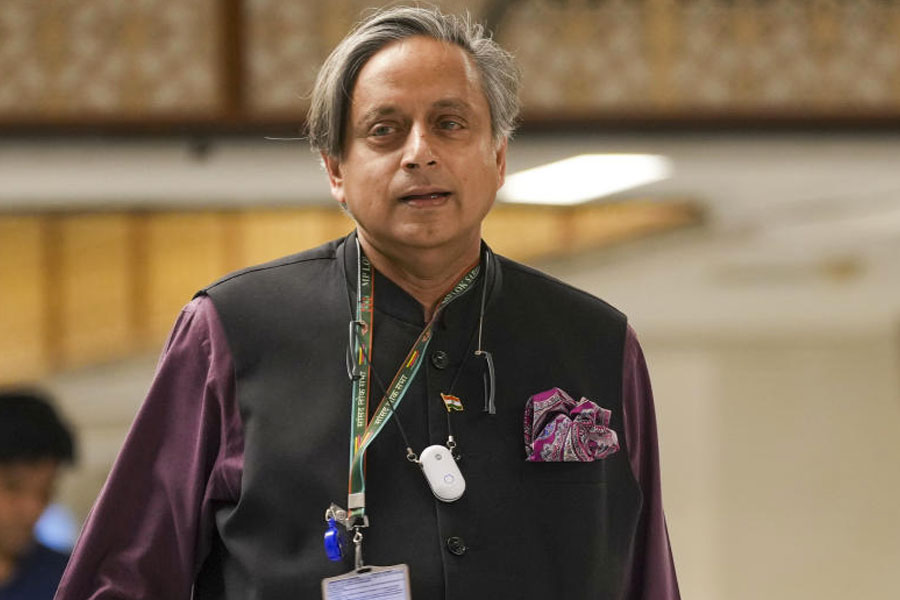
Saina Nehwal is all out to prove that genius is 99 per cent perspiration and one per cent inspiration on court 6 at the Prakash Padukone Badminton Academy in Bangalore. Her immersion in her practice session is akin to a Sufi-like trance: nothing exists but her shuttle and opponent.
The best woman player in the world keeps you waiting for two hours as she trains and then is oblivious as she walks past without a word and flops on a mat before the physiotherapist, who sets about de-stressing shoulders and hamstrings. By the time you reach home disappointed she would have conscientiously answered an email questionnaire.
She is ready to talk the next day - but only after hitting a two-hour session of multi-shuttles first served by her coach, U. Vimal Kumar, and then simultaneously from three ranked male players.
Fifteen years of playing, what is it about hitting a shuttle that drives her so relentlessly? "I am the same person I was when I started playing. I want to win. I don't like badminton as much as I love winning. Even if I were in any other sport I would have that feeling of winning. But destiny wanted me to be in this sport," Nehwal, a brown belt in karate, says earnestly.
Last Friday, the world No. 1 lost to fifth seed Tai Tzu-ying of Taiwan in a fierce three-setter quarterfinal at the Badminton Asia Championship in Wuhan, China. It is a piece with her lose-some, come-back-blazing career.
Just last August, she wanted to call it a day after a string of losses to top-ranked Chinese rivals. Yet, eight months later, shortly after her 25th birthday, she had become world No. 1 - the first Indian woman shuttler to reach the top spot.
It took her five years to move from No. 2 to No. 1. An Olympic bronze winner, she lost the All England Open Badminton Championship finals in March to Spain's Carolina Marin whom she had trounced in their previous three face-offs. Nehwal then went on to become world No. 1, slipped to No. 2 within days and popped back to No. 1.
"It is an incredible achievement considering the hardships faced by the sportswomen of India," says former world No. 1 player Prakash Padukone. "I have a high regard for Indian sportswomen who have excelled at the international level since they have to overcome a lot more difficulties than men."
Tenacity could be her middle name. "To hover in the top five and keep up your motivation, fitness levels and play consistently at the international level for so long is very special," says former national champion Aparna Popat.
It is this self-belief that convinced Kumar to first take Nehwal at her word in 2006. Nehwal, then 16, was India's No. 2, right below Popat. They were at the Melbourne Commonwealth Games with Kumar as head coach. Popat, who had a wrist injury, was losing to Tracey Hallam of England in the league matches.
"This girl was sitting next to me, watching. She said, 'Sir, if you give me a chance I think I can beat Tracey'. It was not arrogance. It was the confidence with which she said that that made me suggest her name as a substitute (for Popat) despite her youth," Kumar recalls.
That was Nehwal's first international outing. She beat Hallam, world No. 6, and won all her league matches. Then came the Philippines Open, where Nehwal, ranked 39th, went on to take the title.
"She showed so much promise even at 16," remembers Popat, herself an unparalleled nine times national champion. "Even as a junior she was always a threat to the seniors."
Nehwal shifted focus to international tournaments after a couple of national titles. And she shifted base. With her parents Harvir Singh, an agricultural scientist, and mother Usha Rani, she moved from Hisar to Hyderabad to train with former All England Open Badminton champion P. Gopichand at his training academy.
"My father got so involved in my play that he never really made me feel we had less with us. We had some money problems but somehow we would manage. He would send me to tournaments and luckily I used to win. My mom was the one who actually pushed me. She would say, you have to get an Olympic medal," Nehwal smiles.
On the sidelines, her salwar-kameez clad mother watches Nehwal train, vigorously nods interspersed with murmurs of "lower" and " aise". Usha Rani, who has played state-level badminton, says she reviews with her daughter after every game.
Young Saina would travel 25km every day to train at Gopichand's academy. Eventually the family moved closer to the institute. Those were rough years but made her tough, she says. And it is her mental toughness that Popat and Kumar single out as her biggest asset. Even after her shock defeat to Marin, Nehwal refused to brood or even analyse the match with Kumar, preferring instead to thrash the shuttles the next night.
It was with the same grit that she'd pulled the plug on her 10-year association with Gopichand last September. Under his tutelage she had won an Olympic bronze in London but with the 2016 Olympics in Rio de Janeiro looming and a series of defeats, she decided to shift lock stock and shuttle to Padukone's academy, where Kumar was.
The move made headlines. After a "horrid" 2013 when she won nothing except a fractured toe, 2014 year began promisingly with the Australia and India Open titles; but by August 2014 the mood had changed. "I actually felt I should leave badminton. What I wanted to achieve was not happening," she recalls. "The Olympics were just two years away. I told Gopi Sir something was going wrong. I was trying, the coaches were trying their best but sometimes it doesn't work out. As a player how much can I also wait and watch?"
During the world championship in Denmark in August, Kumar had suggested a "little bit of change" in training. "I told Gopi Sir, I am going to Bangalore," Nehwal recounts. Kumar was a little startled by her approach. He also felt she had been naïve in her candour with the media - she had spoken about not getting enough attention at Gopichand's school.
"I am not a diplomat," she responds. "I am blunt. Sometimes that is not appreciated but that is me."
Months later, she'd clawed her way back against the better ranked Chinese players, then clinched the China Open and the Super Series. She is not naturally aggressive, she says, but on court something changes. "It just comes from within. Whether it is weights session or on court, I feel a lot more motivated, that somehow I feel I have to pick up all the shuttles," she laughs.
Nehwal, who has always had a good tumble at the net, is now working on her range. "Vimal has worked more on the tactical side," Padukone says. "Saina now has a lot more variety in her strokes which makes it difficult for the opponent to anticipate the shots. Also, she is slowly learning to add deception in her game. Once she masters this aspect of the game, she can be much more effective," Padukone says.
The evolution of badminton in India has seen a swell in sponsors, money and better facilities, especially after the 2010 Delhi Commonwealth Games, where Nehwal won the gold. Now there is the $1-million Indian Badminton League, reportedly the richest badminton league in the world. And Nehwal's estimated earning is believed to be $24 million.
She manages everything herself which Kumar believes is not a very good idea. "I tell her to get some professional advice, but she likes to do everything herself," he smiles. She also takes care of her sponsorships. "Everyone wants to be popular, and be good at more than a sport. But people say ' Arrey, she is modelling also'. Why not?" retorts Nehwal, pointing out that popular players earn more which is important given the limited span of a sporting career. Nehwal intersperses a month of training with two days of ad shoots. "It is more exhausting to stand still the whole day than running across the court," she grimaces.
For her, it is practice before all else. "Some of her sessions go on for three or four hours, or two sessions up to seven hours a day. It is very tough. I have two daughters and sometimes I feel sorry for her. But she doesn't complain," Kumar says. A Sunday break is tolerated to rest the body, she concedes.
Ask who she'd like to play with in a dream match, she picks the top two male players, Malaysian Lee Chong Wei who was top-ranked for 199 consecutive weeks and Chinese Olympic champion Lin Dan. "Of course they won't give me more than 10-11 points but it will be fun because they are the best in the world," she chortles.
Her best is still to come, says Padukone. "I firmly believe that it is just a matter of time before she starts winning the big titles as well," he predicts. "Right now she is putting too much pressure on herself to win the big events. The moment she learns to relax and play, she will start winning those tournaments."
Nehwal is already looking ahead. To the next tournament. And Rio 2016.

Nehwal’s dream match
Playing against male players
- Malaysian Lee Chong Wei, who was top ranked for 199 consecutive weeks
- Chinese Olympic champion Lin Dan

Hairpin bends to the top
- Starts playing at 9
- 2005: Shifts to Hyderabad to join Pullela Gopichand’s Badminton Academy
- 2006: Under-19 national champion
- 2006: Ranked 86th, is the first Indian woman to win Philippines Open
- 2010: Reaches World No. 2 rank
- 2010: Wins the Gold at the Delhi Commonwealth Games
- 2012: Wins the Bronze at the London Olympic
- 2013: A year of defeats
- June 2014: Wins the Australian Open, defeats Spain’s Carolina Marin
- August 2014: Loses in quarterfinals of World Championships for the fifth consecutive time
- September 2014: Joins Prakash Padukone’s academy
- November 2014: Wins China Open Super Series Title. First win in six attempts. Moves to No. 5
- 2015: Wins India Super series at Delhi
- March 2015: Loses the All England Open finals to Marin
- April 4, 2015: Becomes No. 1 (first non-Chinese player since 2010)
- April 9, 2015: Back at No. 2
- April 16, 2015: Reclaims top rank


